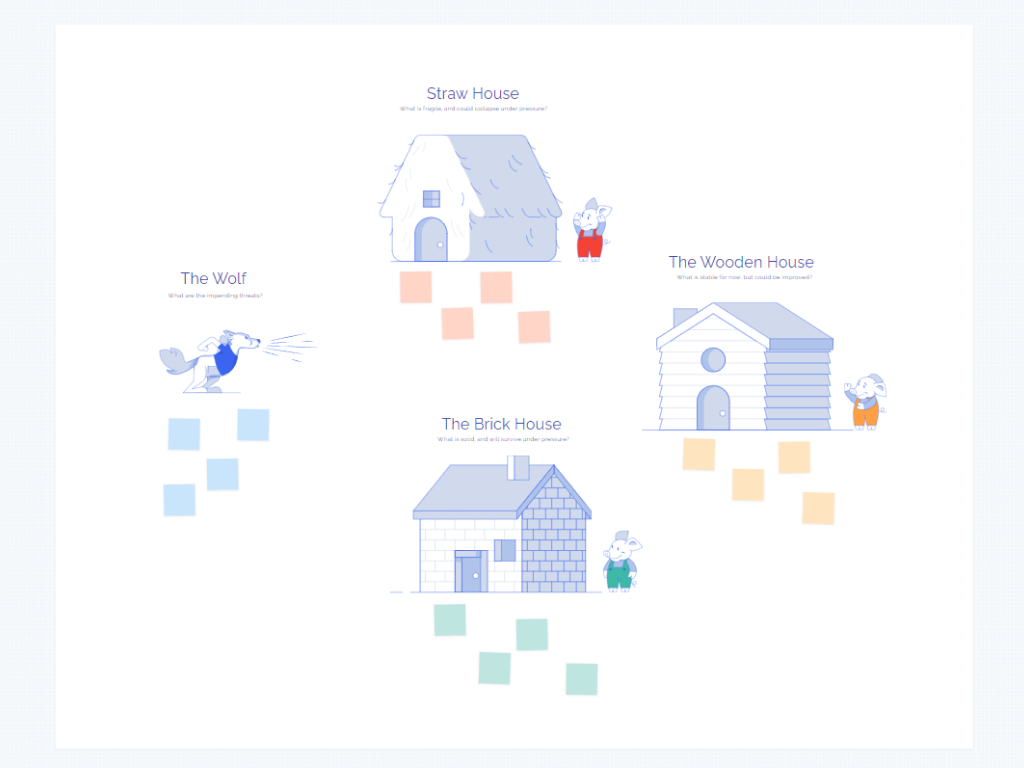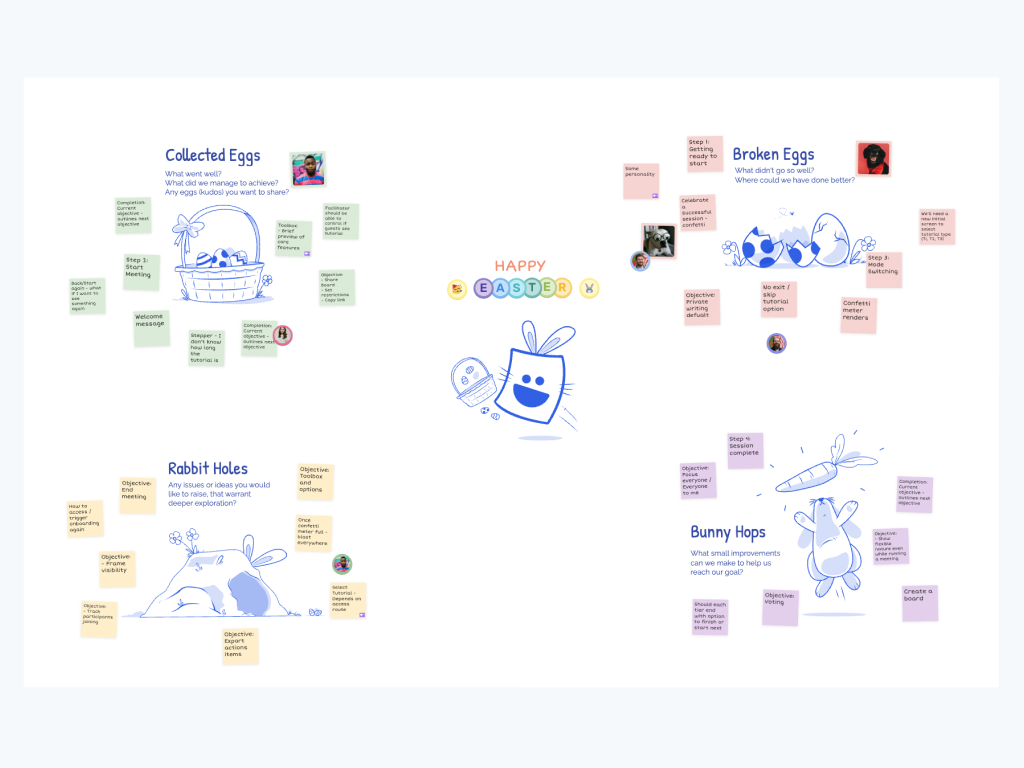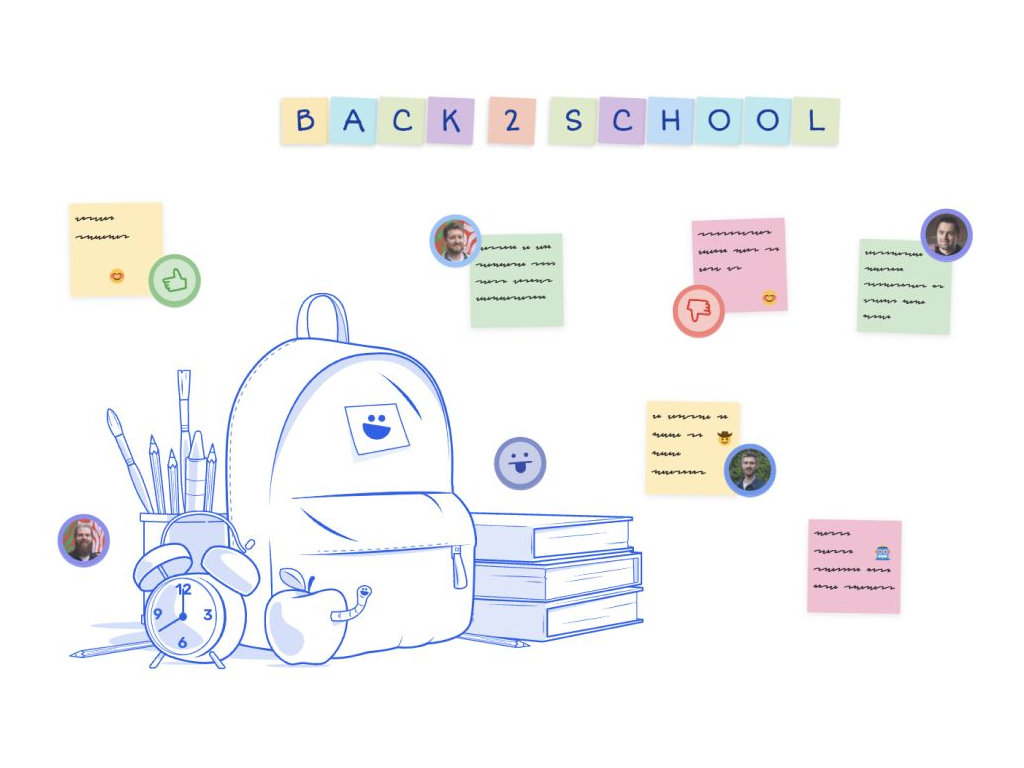The Three Little Pigs is a fun exercise that uses the metaphor of a wolf trying to blow down three pigs’ houses made of straw, wood, and brick – to get a team to classify a set of things into categories of weak, stable, and solid.
This exercise can be used as a sprint retrospective, but can also be used more broadly – for example, to review a team’s processes, product, or robustness of technical components.
The team classifies things into three categories:
- Straw house – things that are unstable, weak, or might fall over at any point
- Stick house – things that are stable and will last a while, but could fall down under pressure.
- Brick house – a solid structure – things that are robust, or have been done very well.
Bonus – The Wolf
Most templates for this exercise just include the three pigs and their houses, but we included the Big Bag Wolf – you can’t ignore the threat of his powerful lungs!
The Wolf is an added concept that gets the team thinking about the future – for example, what risks do each of the components actually face, and how does that factor into the urgency of upgrading them.
The Wolf also helps the team discuss risks within context – if you end the exercise after only classifying the components into robustness, you might miss the ‘so what’ aspect to the exercise, which really should involve quantifying the business risk or gains of improving weaker components.
How to run The Three Little Pigs exercise
- Introduce the exercise and the topic to the team.
- Have the team add their sticky notes to the straw, stick and brick house sections. Use private writing mode if you don’t want each person to read other’s sticky notes while writing their own.
- Once time is up, everyone reveals their stickies. Discuss each section.
- Identify themes and patterns across the sticky notes. Use the topic and voting tool to prioritize.
- Brainstorm, discuss and prioritize the actions or experiments to take out of the exercise.



